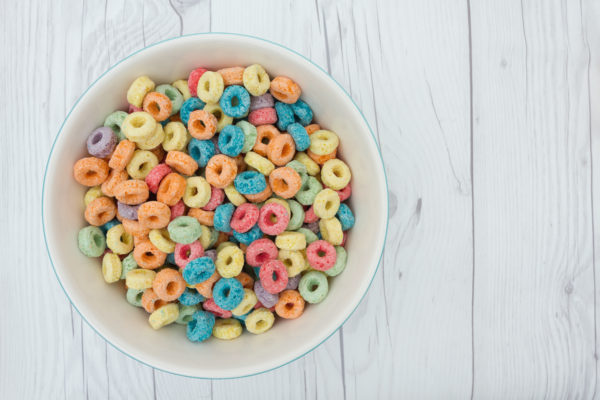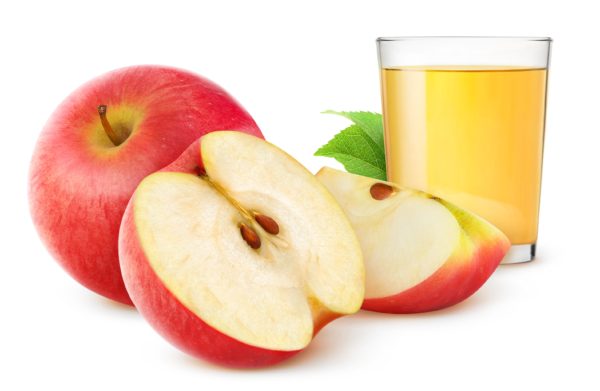Carb Factoring. Simplified. What is it? How do I use it to count carbs?
Michelle MacPhee
D-Mom, M.S. (Psychology)
Carb factors are a handy way to simplify carb-counting - they let you to figure out the carb content of any serving size, so your child isn't restricted to eating the serving size given on the box. But what exactly is a carb factor, and what does the number mean? How do we calculate it, by volume or by weight? How do we use that number to calculate the carb content of packaged foods, baked goods, or a mixed recipe? Here we break it down into an easy explanation of carb factors, plus go through a few real-life examples to illustrate.
What is a Carb Factor?
A carb factor is a number that describes the carbohydrate content of a certain food, by specifying the percentage of that food which is carbohydrate. Knowing a food’s carb factor allows us to calculate the amount of carbohydrates in a given serving of that food, which in turn allows us to dose insulin to cover carbs, empowering us to better manage type 1 diabetes.
Consider the following examples of carb factors: the carb factor of Kellogg’s Cornflakes is 0.83, which means that 83% of its weight comes from carbohydrates; the carb factor for fresh strawberries is 0.06 which means that carbohydrates make up 6% of its weight; the carb factor for apples is 0.13, which means apples are made up of 13% carbohydrate; the carb factor for our family’s recipe for pineapple fried rice is 0.16, so 16% of its weight is carbs.
Knowing the carb factor for a given food allows you to calculate the actual amount of carbohydrates in the serving of that food that your child is about to eat, no matter the size of that serving. You are not restricted to 1 cup servings, you don’t have to be able to divide the posted serving size by 2 or some other simplified factor. Your child can eat whatever amount she wants, and if she eats less than planned, it’s easy to figure out how many grams of carbs are in the leftovers.
Tips from the Trenches
I like to write the carb factor on cereal and cracker boxes so that when my son weighs out that food, he has a quick way of finding the carbs. I also calculate (and write down for quick future reference) the carb factors of all my favorite recipes. When I have baked an item, like banana bread, and left them on the counter for my kids, I simply write the carb factor on the container and then my son can cut any size he wishes and accurately know the carbs. ~Danielle
Weight or Volume?
Carb factors are typically calculated in terms of a food’s weight. However, it is also possible to calculate a carb factor in terms of a food’s volume. To illustrate this point:
- a carb factor (CF) of 0.40 by weight means that 40% of the food’s weight is carbs. So in a 100 gram weight serving of that food, there is 40g of carbs.
- a carb factor (CF) of 0.40 by volume means that 40% of the food’s volume is carbs. So in a 100 ml volume serving of that food, there is 40g of carbs.
Because of the built-in error that may occur when measuring by volume (i.e. using measuring cups), carb factoring is most useful when determined by weight. (The exception to this rule is liquids: carb factoring a liquid by volume is an accurate method of determining carb content.) This precision can be very important, especially in younger children, where a little bit of carb can have a big impact on blood sugar.
How Do I Calculate a Carb Factor?
It's a simple process to calculate the carb factor of a food. All you have to do is divide the carb content of the food by the total weight of the food, arriving at a percentage of the total weight which is carbohydrate.
The most important thing to remember is to always input the carbs FIRST into the calculator. Next, divide by the weight of that food in order to get the carb factor. That is, a carb factor expresses the amount of carbs per amount of weight of that food, which translates mathematically into carbs divided by weight.
Example 1: Carb Factors by Weight – Packaged Foods

The nutritional panel on your child’s favourite (dry) breakfast cereal says the cereal contains 21g of available carbs per 1 cup (or 30g).
Input the carb content (21) into the calculator. Next, divide by the weight of the serving size (30). 21 divided by 30 equals 0.70. Thus, the Carb Factor (CF) of this cereal is 0.70, and this is the carb factor that you would write on the box.
Whenever your child pours out a bowl of cereal in the future, all she has to do is weigh the portion and multiply it by the carb factor (0.70) to find out how many carbs are in that bowl of cereal. For example, if her serving size on this particular Saturday morning weighs 80g, the amount of carbs in that serving would be: 80g x 0.70 = 56g of carbs.
Example 2: Carb Factors by Volume – Packaged Foods
The available carbs (carbs minus fiber) cited on your can of mushrooms is 4g, but the serving size is quoted as a volume, 125 ml (rather than as a weight in grams, as in the previous example). The same procedure works in this case: simply input the carbs first and divide by the serving size in ml: 4 divided by 125 equals 0.03. This is the carb factor by volume for those mushrooms.
To figure out how many carbs are in the whole can to use in your homemade pasta sauce, multiply 0.03 by the total volume of the can (284 ml) to arrive at 9 grams of carbs.
Example 3: Carb Factors by Volume – Liquids
The nutrition information on your brand of apple juice says there are 24g of available carbs per 200ml of juice. Input the carb content (24) into the calculator. Next, divide by the volume of the serving size (200). 24 divided by 200 equals 0.12. Thus, the Carb Factor (CF) of this juice is 0.12, and this is the carb factor that you would write on the tetrapack.
Then, when your child pours a glass of juice, she simply measures the volume in that glass (in ml, since that was the unit you used to create the carb factor) and multiplies it by the carb factor (0.12) to find out how many carbs are in that particular glass of juice. For example, if her serving size of juice is 350ml, the amount of carbs in that serving would be: 350ml x 0.12 = 42g of carbs.

Example 4. Carb Factors by Weight – Mixed Recipes
Imagine you were inspired so much by An Introduction to Counting Carbs that you have made a casserole, adding up the carb content of all the individual ingredients to find that there are 250g of carbs in the casserole. You then weigh the finished product (minus the dish) and find that it weighs 500g. The carb factor for this particular casserole recipe is:
Carb Factor =
Total Carbs in the Recipe
Total Weight of the Finished Product
=
250
500
=0.5
Thus, the Carb Factor (CF) By Weight of this casserole is 0.50.
You could write “CF: 0.50” on the recipe card, and then every time you make this dish (assuming you are consistent in brands and amounts of ingredients), you can simply multiply the weight of the individual portion (in grams) by the carb factor in order to calculate the carbs in that portion.
For example, if your child’s serving size for a particular supper weighs 120g, the amount of carbs in that serving would be: 120g x 0.50 = 60g of carbs.
For an example of how to calculate the carbs in baked goods (without weight):
Adapting and Calculating Recipes (handout from the AB Children’s Hospital Diabetes Clinic)
Example 5: Carb Factors by Volume – Mixed Recipes
Imagine that you took same casserole from the above example and measured its total yield by volume (instead of weight), using measuring cups. You find that the recipe yields 1250 mL (5 cups) of casserole. You still have the same carb content (obtained by adding up all of the individual ingredients), which is 250g of carbs. The carb factor (CF) by volume for this particular casserole recipe is:
Carb Factor =
Total Carbs in the Recipe
Total Volume of the Finished Product
=
250
1250
= 0.2 g of carbs per mL.
Alternatively, you could view the carb factor in terms of cups, dividing the 250g of carbs by 5 cups of total yield, which would result in a carb factor of 50g of carbs for each cup of casserole served.
Thus, the Carb Factor (CF) By Volume of this casserole is 0.20 g/mL, OR 50 g/cup.
You could write “CF =0.2 g/mL” or “CF = 50g/cup” on the recipe card, and then every time you make this dish (assuming you are consistent in brands and amounts of ingredients), you can simply multiply the volume of the individual portion (either in mL, or in cups) by the carb factor in order to calculate the carbs in that portion.
For example, if your child’s serving size for a particular supper is 375 mL (1.5 cups), the amount of carbs in that serving would be:
375 mLx 0.2 g/mL, OR
1.5 cups x 50 g/cup
which, in both cases (since the volume is equivalent), equals 75g of carbs.
Sample recipe which includes an example of how to calculate the carbs in casseroles, salads, and other mixed recipes using a carb factor by weight:
Is a High Carb Factor a Bad Thing?
Not necessarily. A high carb factor does suggest that there is a high content of carbohydrates in that food, relative to other same-weight foods with a lower carb factor. But that doesn’t necessarily mean that it’s “worse” for post-meal blood glucose. For example, a food like spaghetti is higher in carbs than the same weight of, say, a boiled potato. But the pasta is low glycemic, so it will result in less of a post-meal spike than the potatoes, which have a lower carb factor and a high glycemic index.
To predict how a food will impact blood glucose, it is best to consider a number of factors, including things like:
- Carb content, or carb factor, of the food.
- Where a food ranks on the glycemic index.
- The timing of insulin.
- The amount of food consumed.
- The combination of foods consumed at the same meal.
More information on how different foods cause blood glucose spikes after eating:
Why Are Carb Factors Handy?
SHARE THIS PAGE
The above information was reviewed for content accuracy by clinical staff of the Alberta Children’s Hospital Diabetes Clinic.